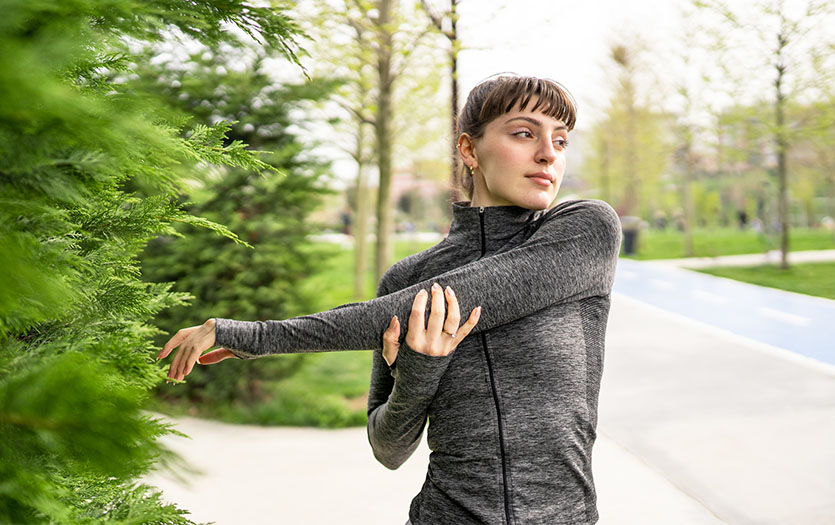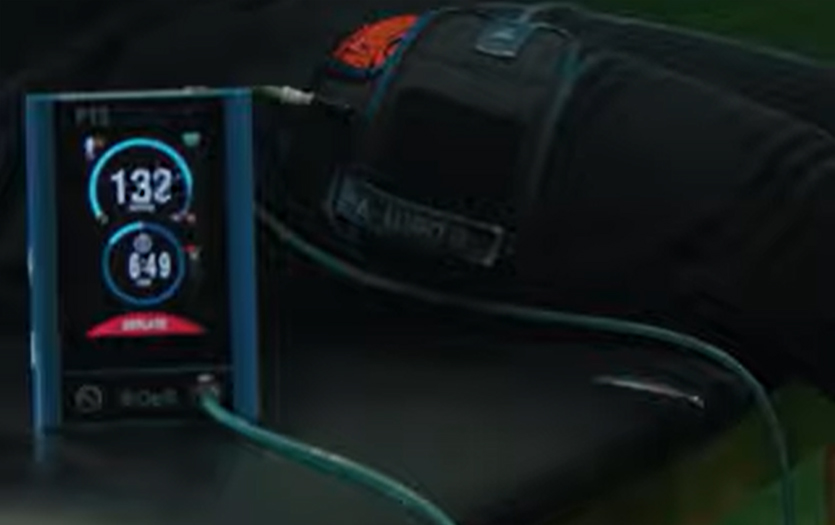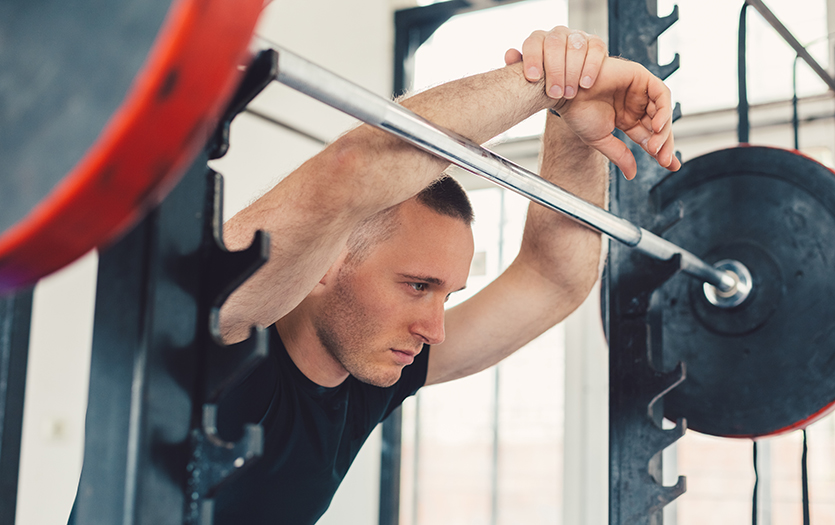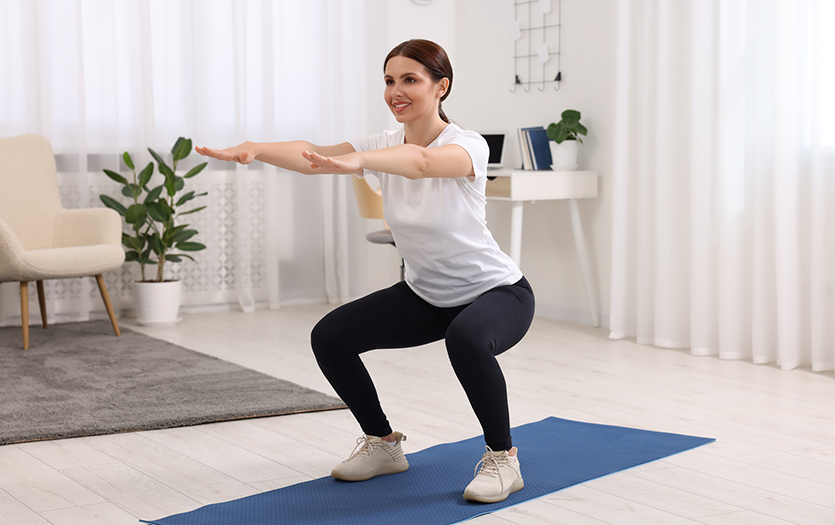
This post was written by Lindsey Derby, CSCS, human performance specialist, Parkview Sports Medicine.
In exercise, we often utilize natural movement patterns to build the strength needed for daily function. Deadlifts, for example, provide strength for picking objects up from the ground. Pushups build muscular pathways to allow us to get ourselves off the ground. And squats create mechanics for moving between sitting and standing positions.
While athletes typically know the benefits of these exercises to build strength, often the general population may not fully appreciate how helpful these training patterns can be. That said, not knowing the proper form can be detrimental and create overuse injuries, so it’s important to introduce these movement patterns, but also ensure you are practicing safe, proper form.
Getting started
So, where to start? While there are numerous exercises to choose from, we will focus on the squat. Squats aren’t inherently complicated, even if there are multiple variations, like bodyweight squats, goblet squats, front squats, back squats, and overhead squats, just to name a few.
In this article, we will focus on the bodyweight squat. Once you master bodyweight squats, others can be natural progressions.
Form check
The graphic below is a good, simple depiction of what to strive for in a bodyweight squat:
- Heels on the floor
- Knees relatively upright
- Slight forward lean over toes
- Back has a neutral spine
- Slight lower back arch
- Chest upright
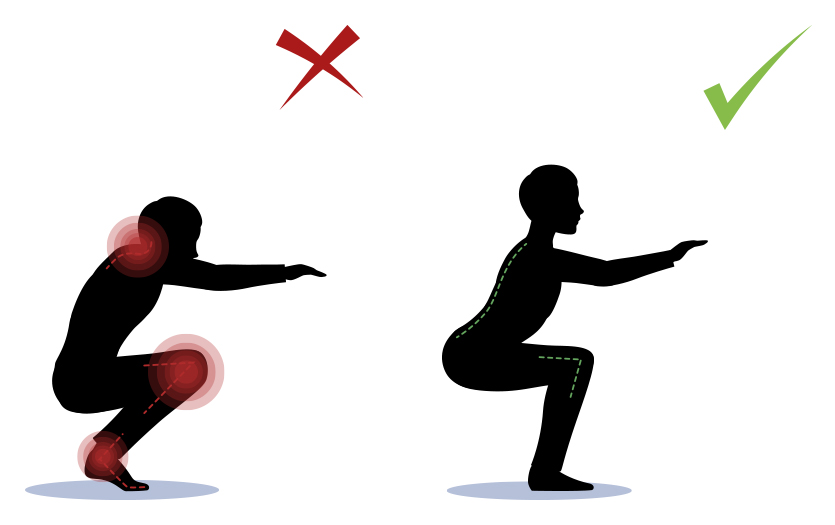
Not shown in this graphic is how far apart the feet should be. This is not a one-size-fits-all recommendation, but the general rule is to stand with them about shoulder-width with toes pointed out slightly. Wherever your feet are, your knees must track out, over your toes.
When doing a squat, look out for these form issues, which can cause potential injuries:
● Curving your back by pulling your tailbone under.
○ The potential fix: Try widening your stance, just a little at a time, and raise your hands up to keep your upper back engaged.
● Hips staying above parallel.
○ The potential fix: Widen your stance and turn your toes out slightly.
● Heels off the ground.
○ The potential fix: Sit back as you begin your squat as if you are going to sit back on a chair, and raise your hands up to keep your weight slightly back in your heels.
If you are suffering from a lifting-related injury, we’re here to help. Learn more about our OrthoExpress clinics by visiting us online here or explore the other physical therapy and rehabilitation services we can provide athletes here.

